I reported this week on how the nation’s residential housing stock reached a record $11,032.2 billion at the end of 2024, with the average dwelling valued at $976,800.
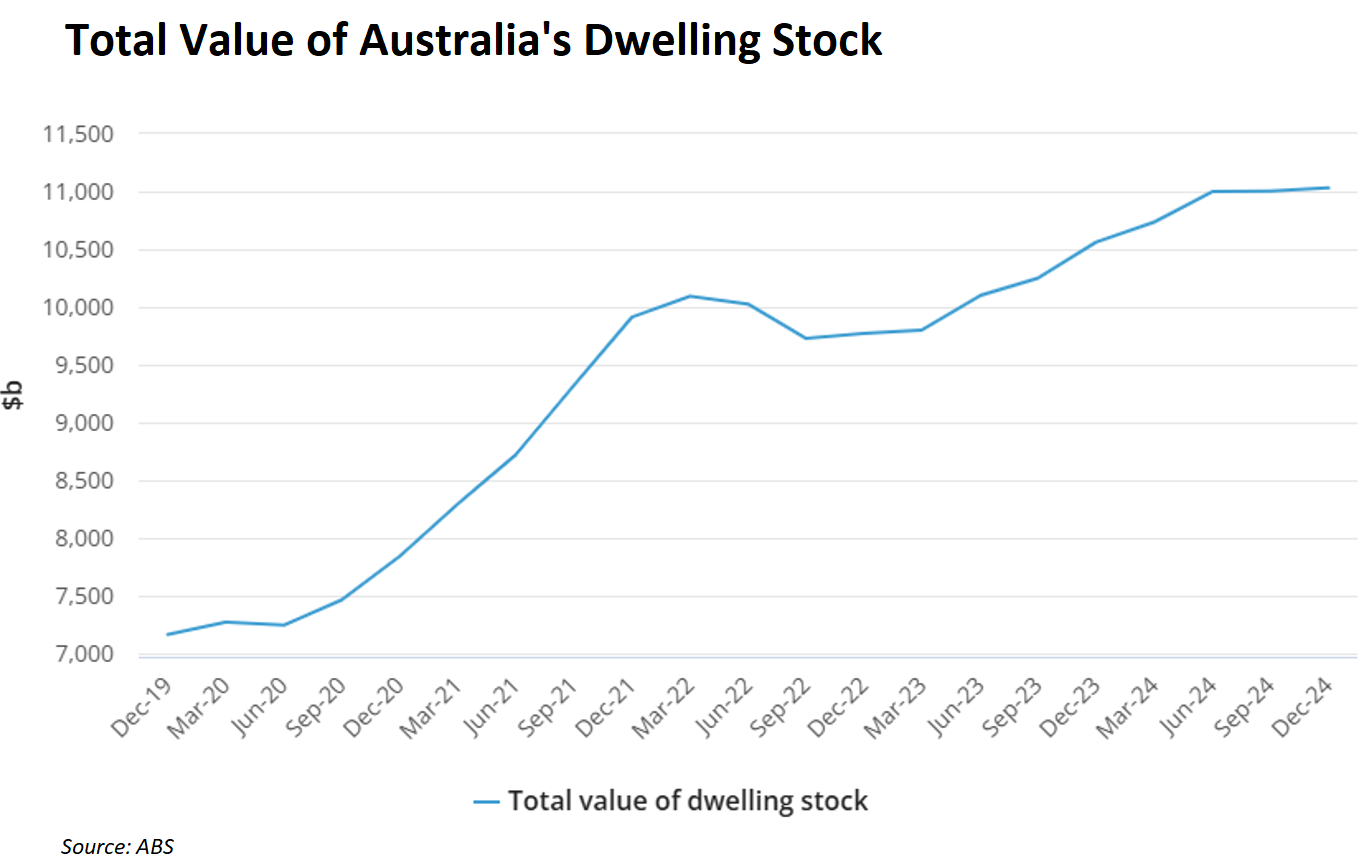
The average dwelling value of nearly one million dollars has created a nation of paper millionaires.
It is also a key reason why Australian households are ranked among the wealthiest in the world in global surveys.
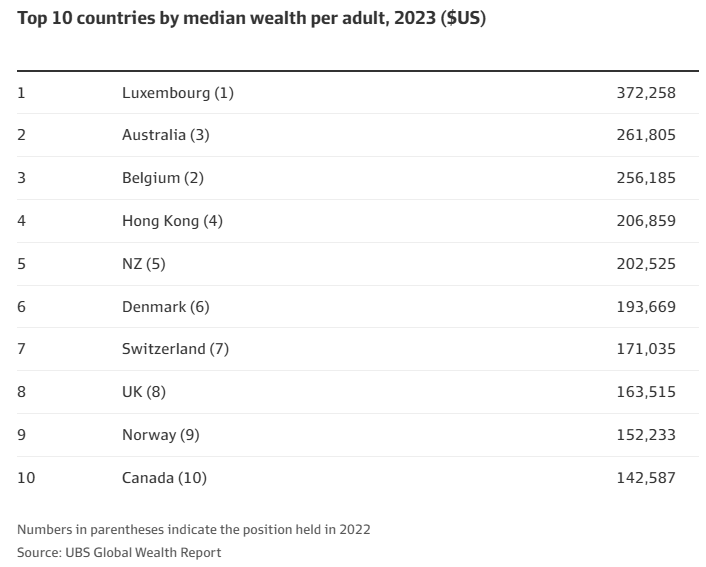
On Thursday, the Australian Bureau of Statistics (ABS) released household wealth data for the quarter ending December 2024.
Total household wealth increased by 0.9% or $143.6 billion in the fourth quarter of 2024. Total household wealth was valued at $16,951.8 billion in Q4 2024, 6.6% ($1.0 trillion) higher than in the same quarter a year ago.
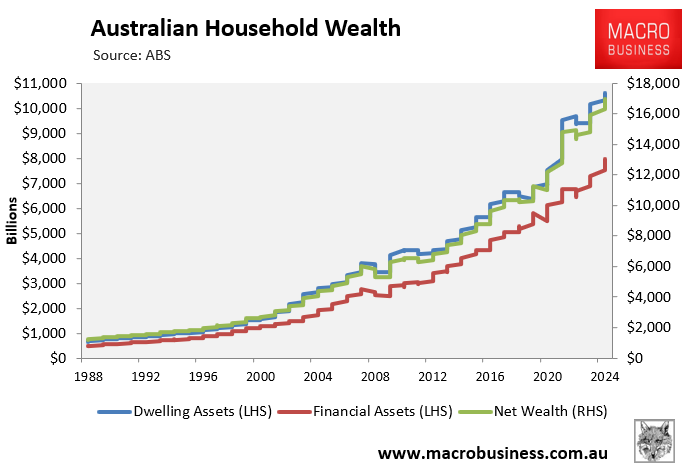
Household dwelling assets reached a record high of $10,598.1 billion, while household financial assets increased to a record high of $7,978.4 billion.
Per capita household net wealth also increased to a record high of $617,643.1 in Q4 2024.
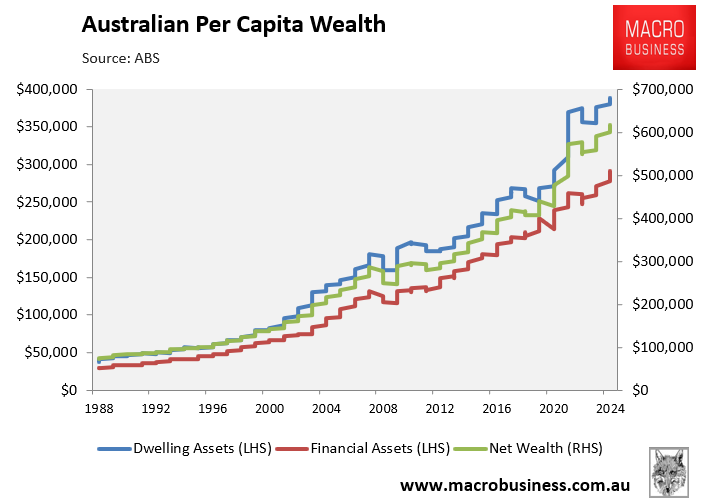
The per capita value of dwelling assets was $386,144, whereas financial assets were valued at $291,023 per capita.
The following chart, provided by Alex Joiner from IFM Investors, shows that household wealth due to home ownership increased by more than 62% since 2019.
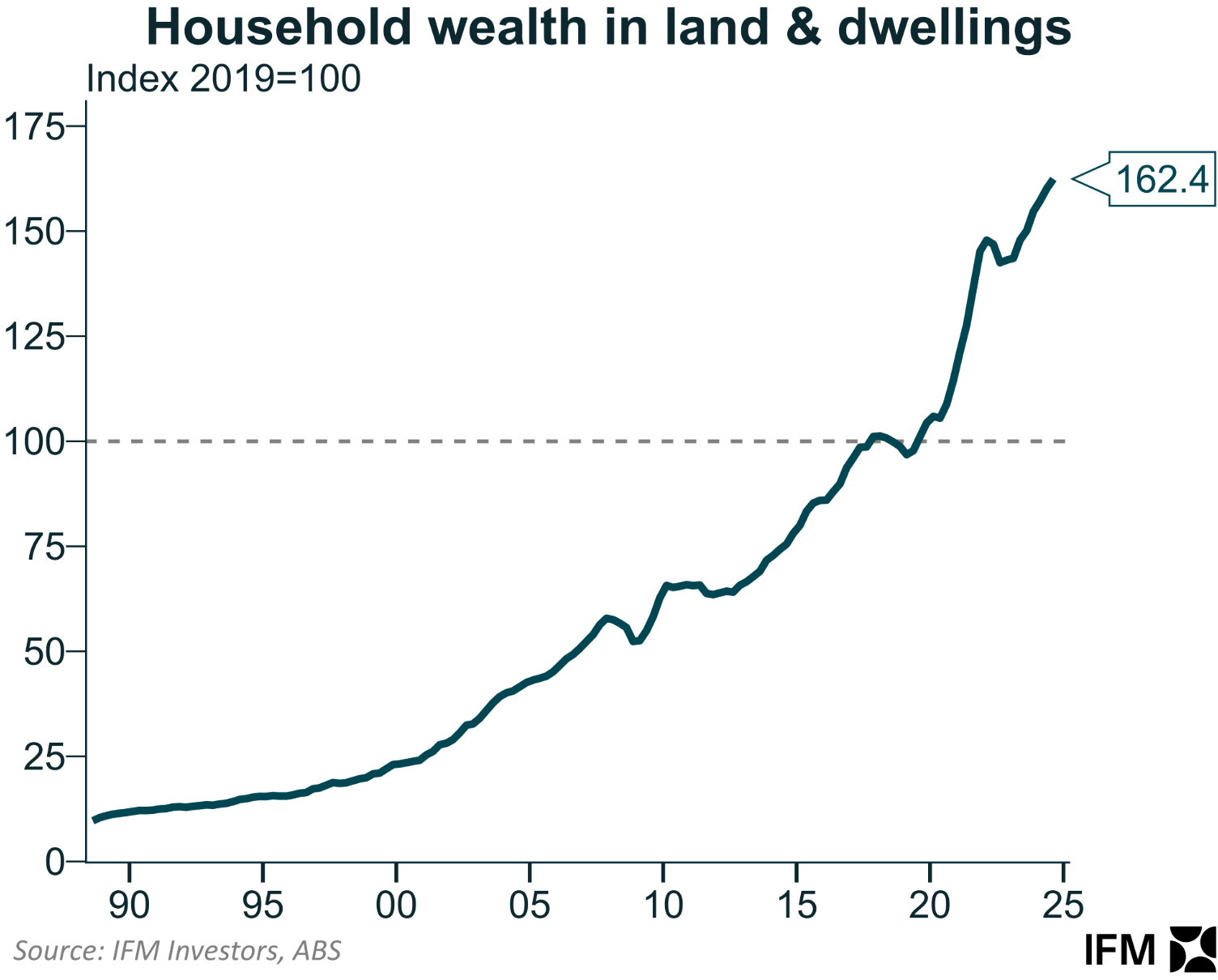
Despite being among the wealthiest households in the world, Australians are struggling financially.
According to Finder Financial Group’s most recent Wealth Building Report, the majority of the country’s wealth is “untouchable” since it is invested in property and super funds.
Finder estimated that superannuation and real estate accounted for nearly three-quarters of household net wealth.
“A lot of Aussies have a huge amount of their wealth tied up in illiquid assets”, said Graham Cooke, Finder head of research.
“Australian fortunes are primarily tied to property and superannuation, making them cash-poor despite their massive net worth”, the report stated.
“Many of these millionaires have landed in this once-elusive club simply because the value of their homes has grown”.
I firmly believe that most of Australia’s household wealth is a mirage and does not benefit society.
Given that housing affordability is at an all-time low and our younger generations are unable to buy a home without parental financial assistance, how can Australian households be considered the world’s second wealthiest?
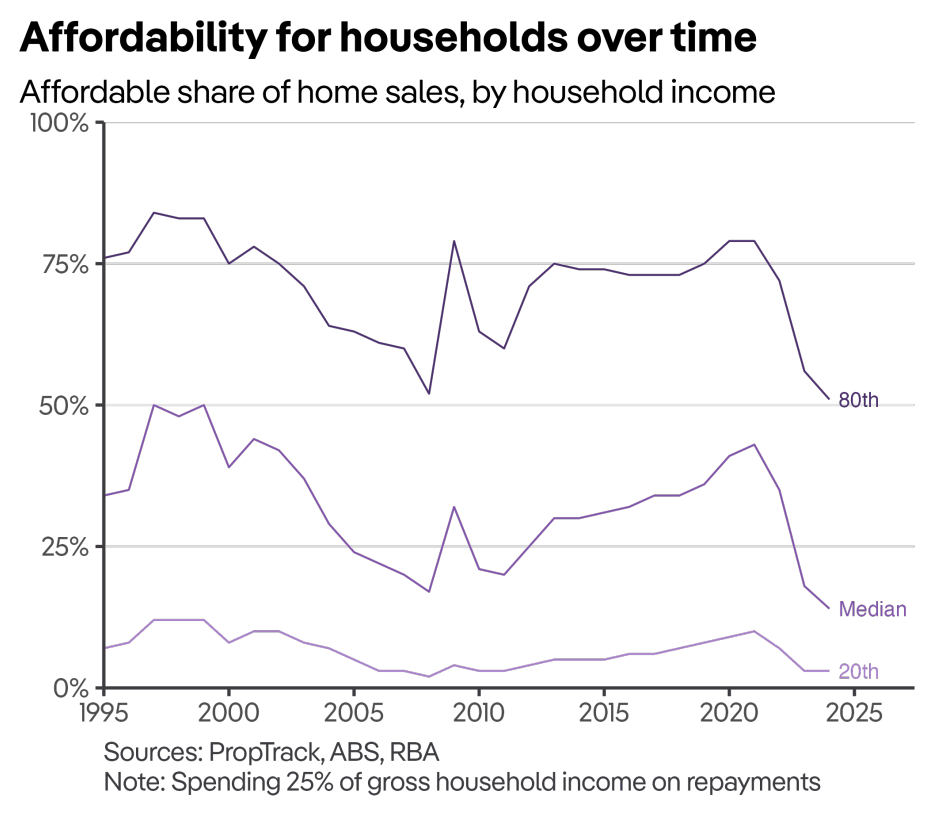
Australians would be wealthier if the average home were valued at $490,000 instead of $980,000, and household debt were 90% of income rather than 180%.
Australia would be a considerably more egalitarian society, and we would be financially better off if our homes cost half as much as they do now, with half the debt.
Australia’s high property prices are negatively impacting our children, grandchildren, and future generations by forcing them to pay significantly more for shelter than is necessary, making them worse off.
A home, whether it costs $500,000 or $2 million, serves the same function.
Higher housing “wealth” is thus meaningless to the vast majority of people who live in their homes rather than own investment property.
Australian households would be significantly better off if we had never experienced the 25-year property boom and did not rank second in the world’s wealth rankings.
The economy would also be more balanced and productive if it channeled capital into businesses rather than inflating home values.
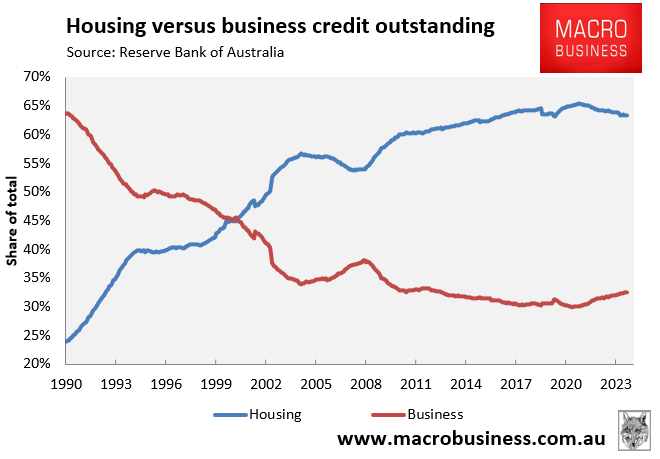
Australia’s $11 trillion housing stock represents a gross misallocation of capital.

